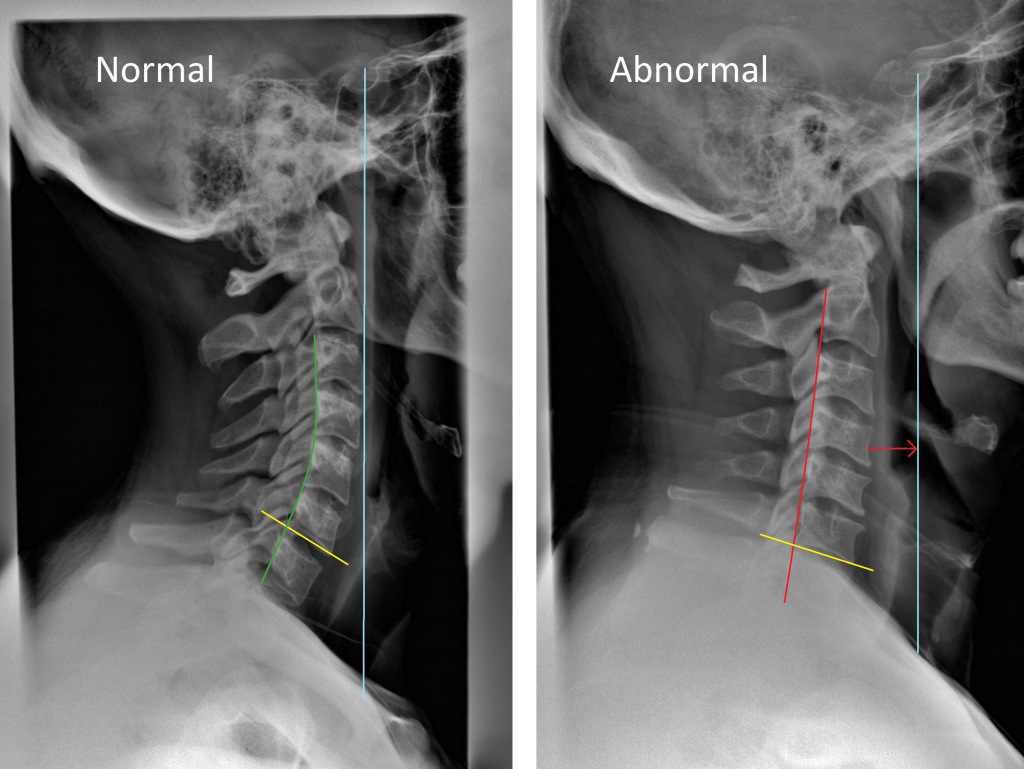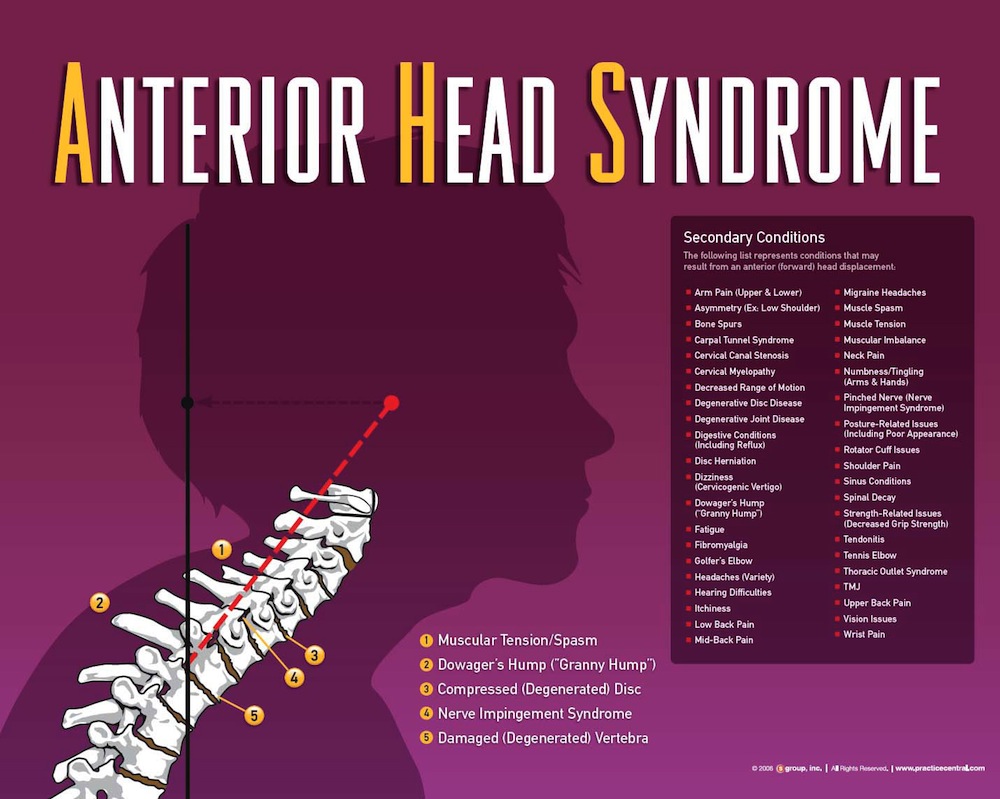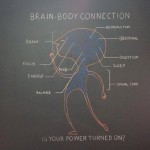
Posture refers to how the body is aligned and positioned in conjunction with the force of gravity acting upon it. Regardless of whether we are sitting, standing or lying down, there is always a gravitational force that applies pressure on our ligaments, joints and muscles.
When we talk about the neck, the normal structure will have the head sitting directly over the shoulders. Normal curves and proper disc spacing allow normal function of the spine and nervous system. When a structural shift has occurred in the neck, the head will often move towards the front, which we call Anterior Head Syndrome. When this shift occurs we’ll often find vertebrae in the spine that have become locked. The combination of these two will cause the shoulder muscles to spasm, in attempt to support the extra weight caused by the shift forward. The tight shoulder muscles are a direct result of the structural shift in the spine (the tight muscles are the symptom, not the true cause of the problem).
I see anterior head syndrome very often in my practice, and it is often accompanied by pain or numbness in the shoulders, neck, and sometimes into the hands. It is also common to find someone with frequent tension headaches to have this condition. It shows up frequently in those who sit all day and/or spend long hours at a computer, but can be found in others as well. If left uncorrected for an extended period of time, spinal degeneration will often take place.
Research has shown that the restoration of motion to a previously locked joint leads to a restoration of normal joint function and physiology. Further, there is increasing evidence that some spinal degeneration may be reversible. Therefore, correction of a vertebral subluxation can not only attenuate and arrest this degenerative process, but can actually allow the condition to reverse itself.
There are many out there who will focus on the shoulders as the problem. Although they always mean well, they usually are not addressing the primary source of the problem. Our goal is to correct the structural issue in the spine, after that the secondary issues will resolve themselves.
Now, when it comes to poor posture, it is key to become aware of what causes it and what you can do to correct it (when you’re outside of our office). We need to be conscious of how we sit when we drive and/or work at our desks. It is essential that we take frequent breaks to stretch the neck/shoulder muscles and to walk around (even if it’s only for a few minutes). Ideally, we want a work environment that puts less stress on the spine.
As chiropractors, we understand the human body is better able to deal with these stressors when there is balance in the spine – allowing the nerve system to work free of any structural interference. The focus chiropractic care is to keep the bones of the spine (vertebrae) in their proper relationships with each other, which enhances the function of the spine and nerve system in order to allow the body to fully express its maximum potential and work optimally.







